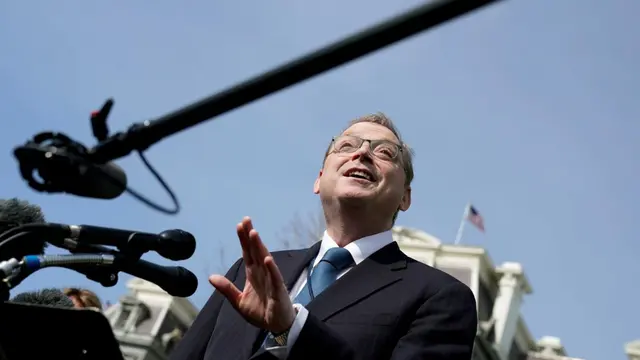A top White House economic adviser on Friday predicted an "increasing divergence" between states controlled by Republican governors and those led by Democrats, saying Republican "red" states opening up faster will see a stronger economic recovery.
President Donald Trump has claimed repeatedly without evidence that Democratic-led "blue" states have not reopened more quickly amid the coronavirus pandemic in order to hurt his re-election bid in November.
While all 50 states are reopening, there are substantial variations in how states are deciding to open up, with some forging far ahead of others.
According to data provided by the Washington Post, almost all states which retain relatively more restrictions are controlled by Democratic governors. The Post, which classifies states as having major, moderate and minor restrictions in place, finds that only three out of 18 states that are marked as having moderate or major restrictions are "red" states.
The Republican president has been pushing to reopen the crippled economy as the country works to recover from a virus that has so far killed more than 113,000 people in the United States, by far the most in the world.
"The thing that as an economist gives me pause as I look forward is that there's a radical difference right now in the data between red states and blue states," senior White House adviser Kevin Hassett told Fox News Channel.
Hassett pointed to Vermont, which he described as a blue state that elected a socialist U.S. senator - a reference to U.S. Senator Bernie Sanders - as a state with a low number of coronavirus cases per capita whose economy remains basically closed.
"Other states are wide open," he said. "So I think that there is going to be increasing divergence between the economies of blue states, where unemployment is going to be staying very, very high and the economies are going to stay closed, and the red states that are mostly open," Hassett added.
About half a dozen states, including Republican-led Texas and Arizona, are grappling with the rising number of coronavirus patients filling hospital beds, fanning concerns that the reopening of the U.S. economy may spark a second wave of infections.
Hassett said national trends continue to head down, but there are some flare-ups and "the battle is not over."
A recent review conducted by the New York Times in late May found that the coronavirus had ravaged much more severely in places where Democrats converge, while Republicans were more likely to live in counties that only reported very few cases, which the report said offered an explanation as to why people identified with the two opposing parties were thinking about the virus differently.
The Republican narrative that shifted from downplaying the pandemic to accusing the Democrats of sabotaging the president's attempt to revive the economy has great effects on communities which were relatively spared by the disease, said the Times report. Democrats, on the other hand, would be more susceptible to what scientists have been arguing - caution in reopening - since they are more likely the ones bearing the brunt of the damages made by COVID-19. A partisan divide on how to lift restrictions is therefore forged thanks to the very real difference in death rates.
(Cover image: Council of Economic Advisers Chairman Kevin Hassett speaks to reporters at the White House in Washington, U.S., April 11, 2019. /Reuters)
(CGTN)
 简体中文
简体中文

